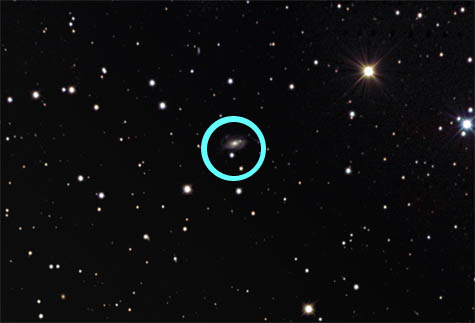Westmont Telescope Captures a Supernova
Stellar Explosion "Shines With the Power of Several Billion Stars"

Westmont’s Keck Telescope has helped confirm this week that an unusually bright ball of light spotted by researchers with Puckett Observatory Supernova Search was, in fact, a supernova that has been named Supernova 2008an. The above image is the result of work by Westmont physics professor Michael Sommermann.

According to a press release from Westmont spokesman Scott Craig, the supernova (demarcated in the above image with an arrow) is near a galaxy (the larger, fuzzy body near center of the above image) that exists approximately 400 million light years away from Earth. Given that galaxies usually contain around 100 billion stellar bodies, the fact that the supernova appears as brightly as it does means that it “shines with the power of several billion stars.”
“Supernova” is the term for the explosion of a star, which releases a tremendous amount of light energy that would seem to be a new luminous body in space. They last between several weeks to several months and are triggered by nuclear fusion – either as a result of aging star’s core collapsing or a star’s core temperature to the point of explosion.



